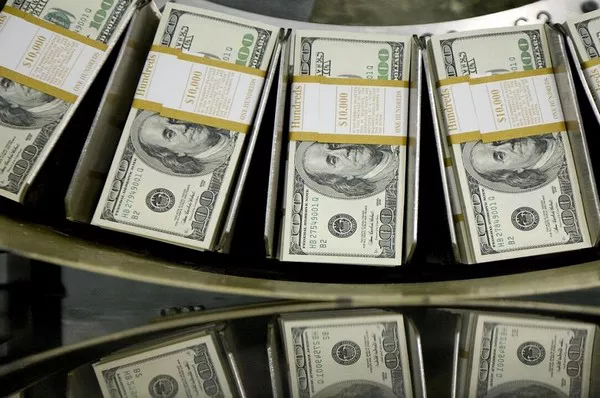In the intricate web of global economics, few factors wield as much influence as interest rates. Among the myriad consequences of interest rate adjustments, the fate of the U.S. dollar stands out prominently. As interest rates fluctuate, a cascade of effects ripples through financial markets, impacting not only domestic but also international economic landscapes. This article aims to dissect the intricate relationship between rising interest rates and the U.S. dollar, shedding light on the various mechanisms and consequences that unfold.
Understanding Interest Rates:
Interest rates are the cost of borrowing or the return on investment for holding assets. Central banks, such as the Federal Reserve in the United States, utilize interest rate adjustments as a tool to achieve macroeconomic objectives. When the economy is robust, central banks may raise interest rates to curb inflation and prevent the economy from overheating. Conversely, during economic downturns, central banks might lower interest rates to stimulate borrowing, investment, and spending.
The Dollar’s Sensitivity to Interest Rates:
The U.S. dollar, often regarded as the world’s primary reserve currency, exhibits a strong sensitivity to changes in interest rates. The relationship between interest rates and the dollar is grounded in the attractiveness of U.S. assets to global investors. When interest rates rise, the returns on U.S. assets become more enticing, drawing in foreign capital. Consequently, the demand for the U.S. dollar increases, boosting its value relative to other currencies.
1. Capital Flows and Foreign Exchange Markets:
One of the immediate effects of rising interest rates is the redirection of capital flows. As U.S. interest rates climb, global investors seek higher yields, prompting them to reallocate funds to U.S. assets. This surge in demand for U.S. assets exerts upward pressure on the dollar in foreign exchange markets. Consequently, the exchange rate of the dollar strengthens against other currencies, reflecting its increased purchasing power.
2. Trade Balance and Competitiveness:
While a stronger dollar may enhance the purchasing power of U.S. consumers abroad, it can have repercussions on the country’s trade balance. A robust dollar makes U.S. exports more expensive for foreign buyers, potentially leading to a decline in export competitiveness. This, in turn, may contribute to a trade deficit as imports become more attractive to domestic consumers. Policymakers often grapple with the delicate balance between a strong currency and maintaining a competitive export environment.
3. Inflationary Pressures:
Rising interest rates are commonly employed as a preemptive measure to combat inflation. However, they can also have inflationary implications. As the dollar appreciates in value, the cost of imported goods decreases, contributing to disinflationary pressures. While this may be beneficial in terms of controlling inflation, it poses challenges for domestic industries, especially those reliant on exports.
4. Impact on Emerging Markets:
The consequences of rising U.S. interest rates extend beyond domestic borders, affecting emerging markets in particular. Higher U.S. interest rates can trigger capital outflows from emerging economies as investors seek higher returns in the U.S. This capital flight can lead to currency depreciation, higher borrowing costs, and economic instability in these nations. Central banks in emerging markets often find themselves navigating a delicate balance between maintaining competitive interest rates and managing capital outflows.
5. Global Financial Markets:
The interconnected nature of global financial markets means that changes in U.S. interest rates reverberate throughout the world. As the dollar strengthens, other currencies may weaken, impacting the valuation of international assets. Investors around the globe closely monitor U.S. interest rate decisions, adjusting their portfolios in response to potential shifts in currency values and asset prices.
See Also When Should I Buy Us Dollars?A Strategic Approach
Conclusion:
In the intricate dance between interest rates and the U.S. dollar, each move has far-reaching consequences. The dollar’s sensitivity to interest rate changes is a testament to its role as a global benchmark currency. As interest rates rise, the dollar’s allure as a safe haven and high-yield asset intensifies, attracting global capital and influencing trade balances. Yet, the repercussions are not confined to U.S. borders, as emerging markets grapple with capital outflows and the global financial landscape adjusts to shifting currency values.
Policymakers face the ongoing challenge of navigating the delicate balance between managing domestic economic conditions and considering the broader global implications of interest rate adjustments. As the world economy evolves, the dynamics between interest rates and the U.S. dollar will continue to shape the contours of international trade, finance, and economic stability. The intricate interplay between these factors underscores the need for a nuanced and strategic approach to monetary policy in an increasingly interconnected global economy.


